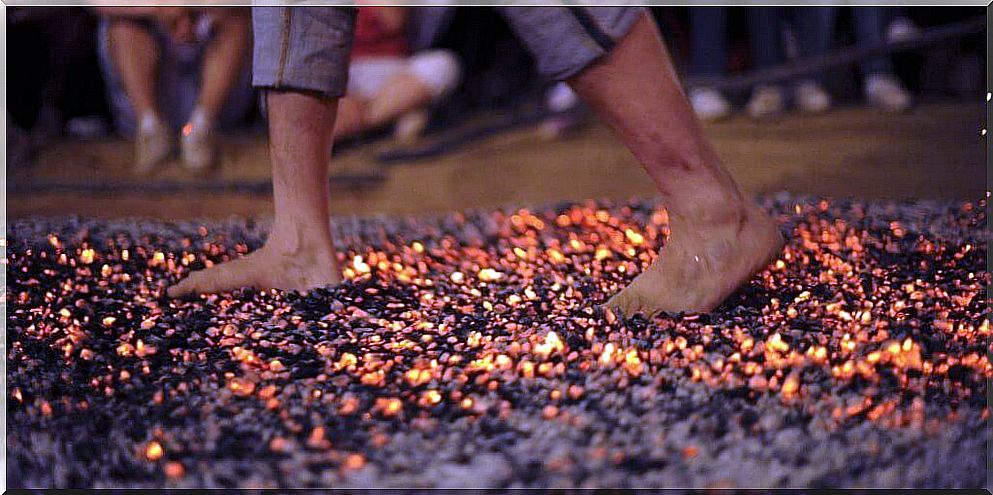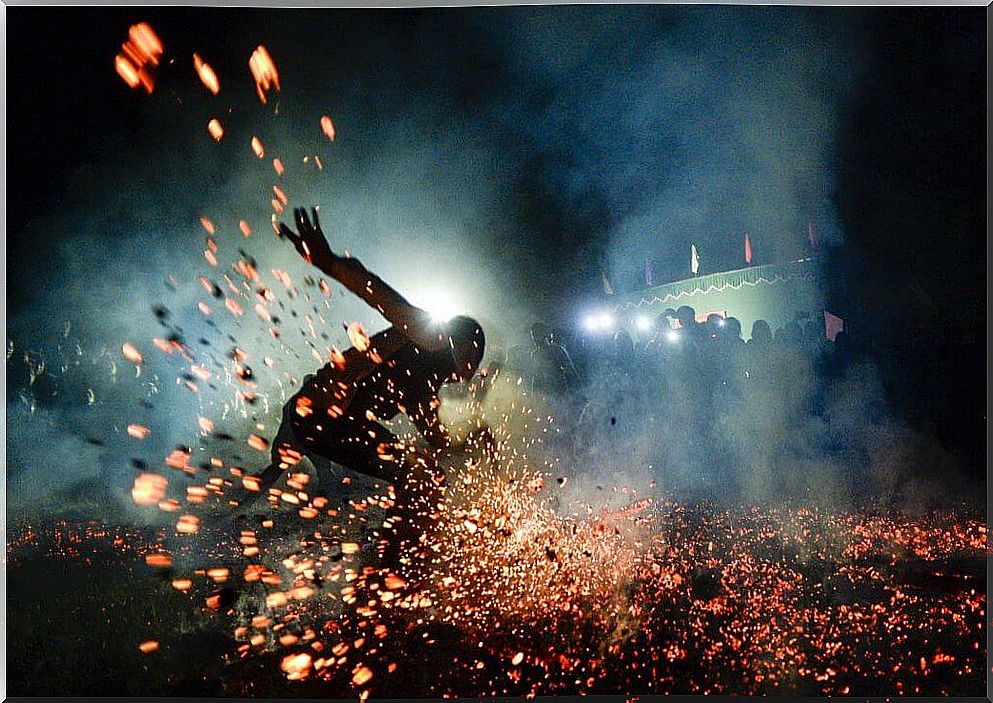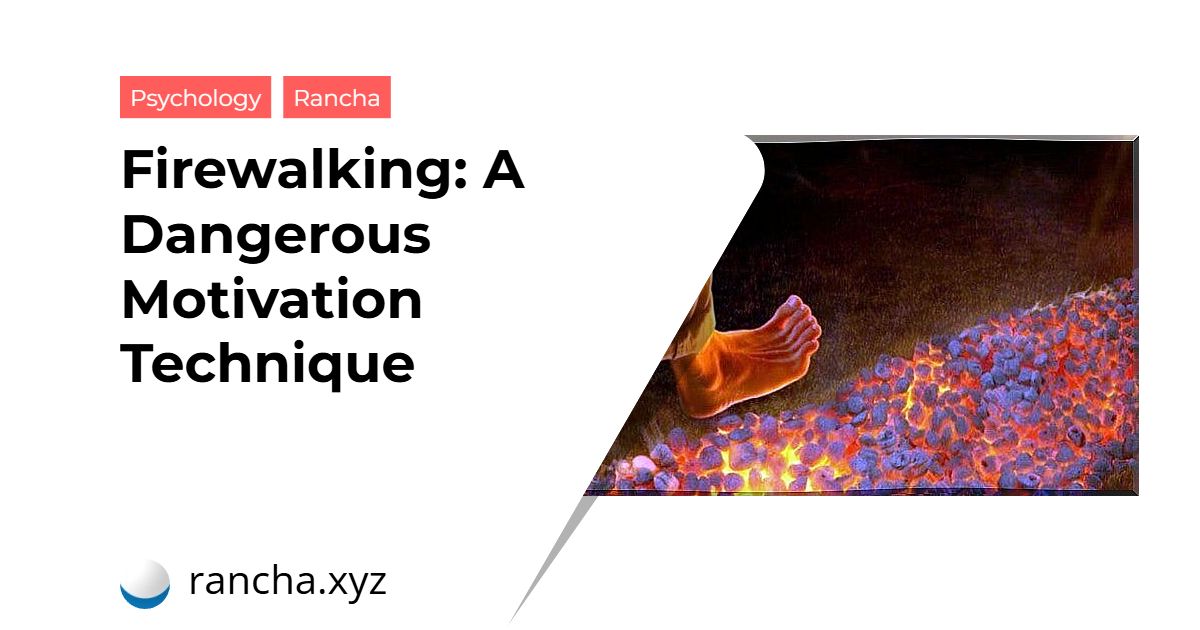Firewalking, or walking on hot coals, is a controversial motivational technique that has become fashionable in recent years. Objections to this practice span a wide spectrum: some consider it a relatively effective method and others claim it is a complete hoax.
It is touted as an innovative technique, but in fact, the first references to walking over hot coals date back over 4000 years. Such a ritual took place in India and its purpose was religious. It was part of healing ceremonies, initiation, purification, invocation of good harvest and much more.
It is known that there are ancestral communities that still practice walking over coals, such as the Kahunas or priests of various native groups in Hawaii. They currently walk on burning lava. The natives of the Kalahari in Africa perform similar rituals.
Firewalking is nothing new. What happened is that, since the 70s, this practice resurfaced in the United States and began to become popular. Its main driving force was Tolly Burkan, who claimed to have read a physics article in Scientific American and has since started walking on hot coals without any problems. He has published several books and was involved in an alleged “alien abduction”.

The Basics of Firewalking
Firewalking fans guarantee that it is a motivational technique that facilitates personal development. In his opinion, it is a very useful tool to increase self-confidence, face fears and stimulate motivation. They believe that if you can walk on burning embers, you will feel more capable and positively change your image of yourself.
They say that anyone is afraid to walk on embers. However, those who overcome this fear and manage to take the first step become stronger. Apparently this will be extrapolated to your daily life. It is a “radical shift” to destroy negative beliefs and cultivate more positive ones.
Firewalking is a technique promoted and practiced by some coaches. They often use metaphors to introduce or enhance positive beliefs about themselves. Walking on smoldering embers would be a metaphor for what happens to the other challenges we face.
walk on coals
Firewalking fans point out that experiences, both success and failure, affect our mental programming, that is, our values and beliefs. From this, each one forms an image of what he is capable of doing. The result would affect self-confidence. They indicate that walking over hot coals at 500°C contributes to mental reprogramming. If you rise to the challenge, you will change your self-image.

In the Firewalking process, three steps must be completed, which are:
- Identification. It consists in exploring the limiting beliefs and defining the goals that each one wants to achieve, pointing out the mental programs that impede them.
- Learning. You are guided to overcome fears and learn to trust yourself so that you can move forward.
- Change. At this stage, the desire for change is encouraged, as the goal is for each person to learn to break down the barriers that prevent them from achieving what they want.
Firewalking is expected to help people deal with difficult situations. With the experience of walking on embers, the person internalizes the idea that, if he doesn’t move forward, he gets burned (if he doesn’t keep walking, the suffering is greater). Also, it must stand firm and continue no matter what.
Currently, Firewalking is used especially by companies that seek to “empower” their employees. Some companies that have already resorted to this technique are Microsoft, American Express and Coca-Cola, among others.
What happens when people walk over hot coals?
What is supposed is that the mental strength of someone who can walk on burning embers is so great that they come out the other side without any injury. This would prove to the participant that he is stronger and more capable than he thinks. However, from a physical point of view, there are several nuances that cannot be ignored.

According to Luís Alfonso Gámez, critic of the subject and author of the article “254 euros to learn to walk on hot coals”, this is no feat. On the contrary, he says that anyone can do this activity, that he does not need any preparation, much less pay to learn how to do it. It is based on a series of physical facts, which can be summarized as follows:
- Walking on the coals of coal is like putting out a candle with your fingers. The flame is even hotter than the embers, as it reaches 800 °C.
- Coal embers are less dense than the human body and have low thermal conductivity.
- The foot warming up process is very slow and the temperature decreases when we lift it to walk.
- Firewalking promoters place a thick layer of ash over the embers, which blocks heat transmission.
- Gámez assures that this supposed coaching technique is nothing more than a trick to “take” people’s money. He quotes skeptic John Nevil Maskelyne, who said, “Those who have a lot of money and no brains are made for those who have a lot of brains and no money.”
An interesting experiment
Richard Wiseman is an English psychologist who wanted to “put to the test” this controversial motivation technique. On his BBC programme, ‘Tomorrow’s World’, he did a simple experiment. He made a mat of burning embers, but this time he didn’t use a length of 4.5 meters, which is usual in Firewalking. Instead, he set up an 18-metre runway and invited three well-known promoters of the technique to traverse it live on television.
The first one walked 20 feet, but had to jump off the track because he was burning his feet. Exactly the same happened with the second and the third didn’t want to participate in the experiment. The first two had to be treated because they had second-degree burns on the soles of their feet.
In this way, Wiseman proved what he wanted: the “mental strength” ends at 6 meters. That’s why Firewalking gurus use short commutes. They calculated exactly how long it would take for people not to get burned. There is no positive thinking that lasts after 20 feet of burning embers.

A “trick” that works anyway
Most of us like to dream and believe in the possibility that the extraordinary becomes possible. There are many myths about the “power of the mind” which, although enormous, cannot break the laws of physics. And much less after an instruction that, most of the time, only lasts 3 hours.
Despite this, there are many people in the world who claim to have gained unimaginable benefits from Firewalking. They say their life has changed radically. Several companies claim that they improved their workers’ results after they walked through the smoldering embers. There are also those who came out singed from this experience. “I wasn’t prepared,” they say.
To conclude, one of the great powers of the human mind is precisely to believe, even against all the evidence. If you want to believe and if what you believe helps you overcome any discomfort, go ahead. It’s the same with the placebo effect. If all this can help you to live better, who are we to question it?
 rancha.xyz Be free to choose their own route to self-knowledge, health and balance of body and soul.
rancha.xyz Be free to choose their own route to self-knowledge, health and balance of body and soul.




